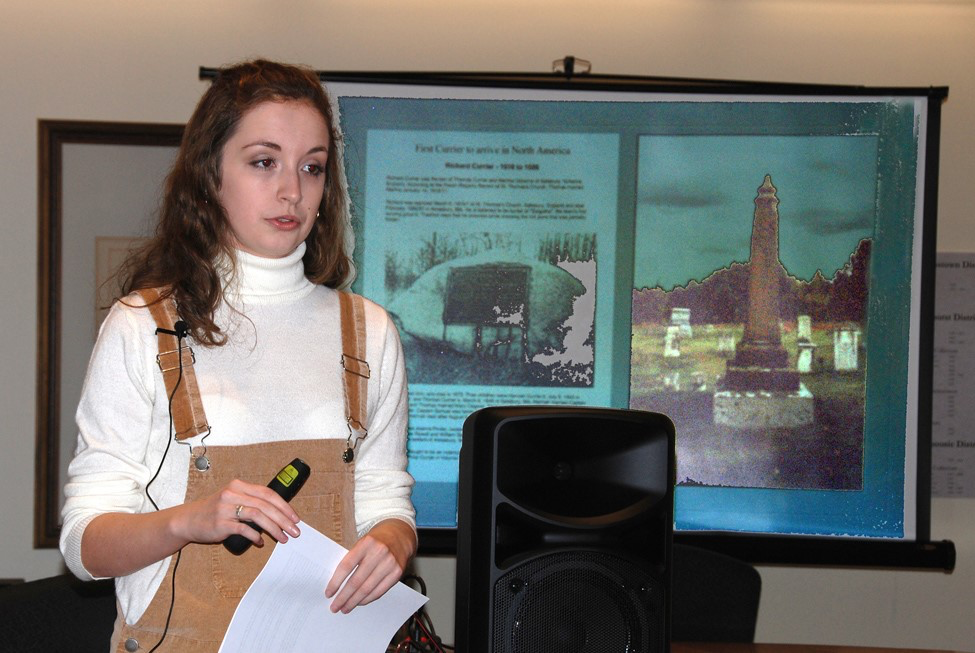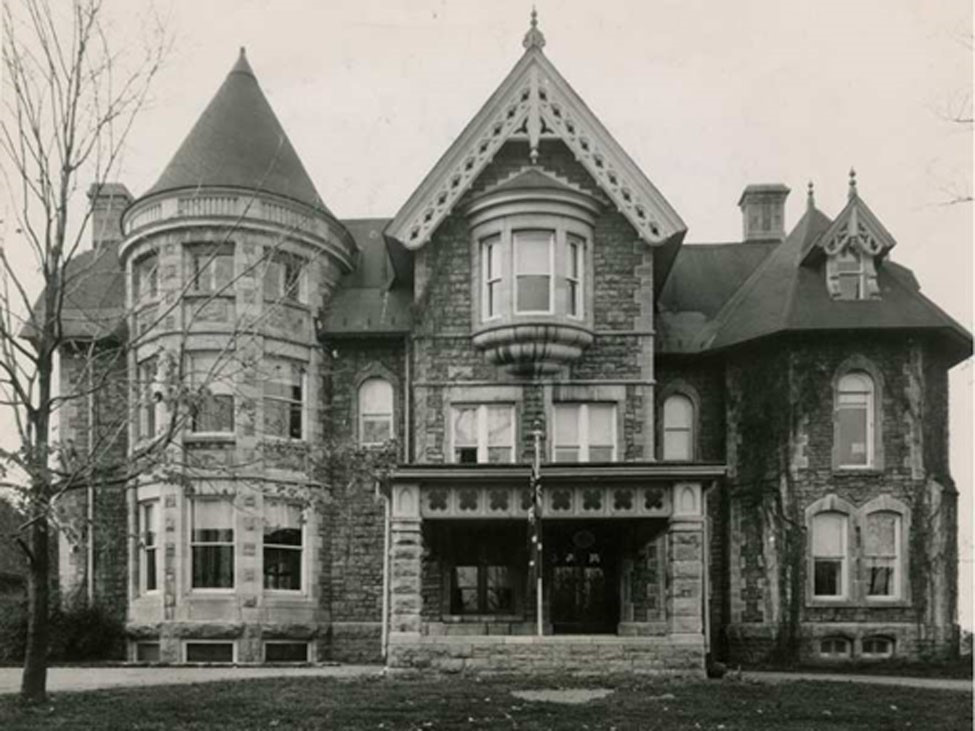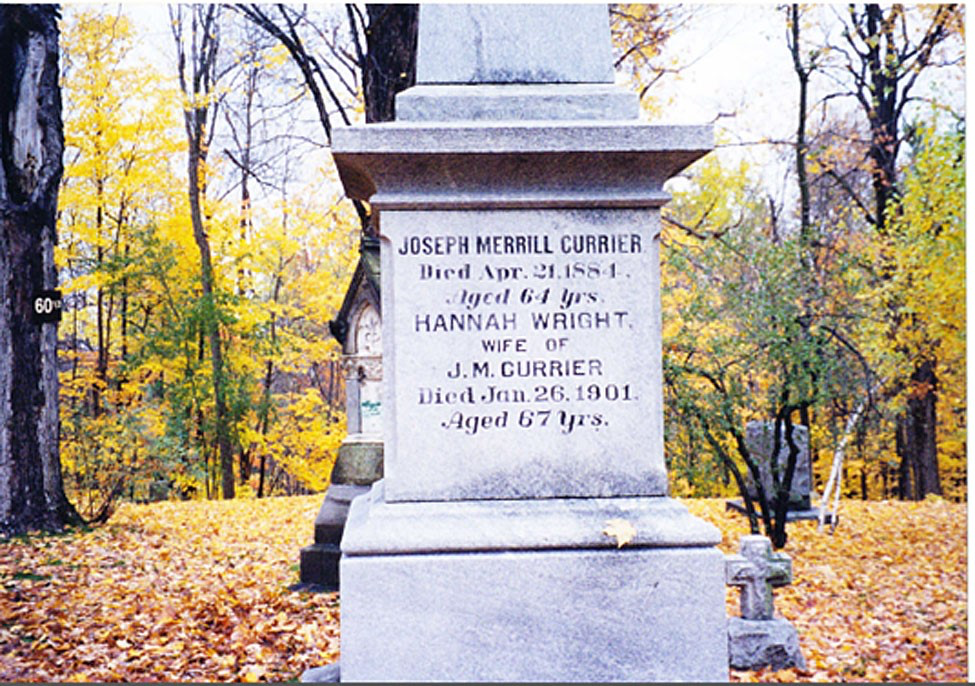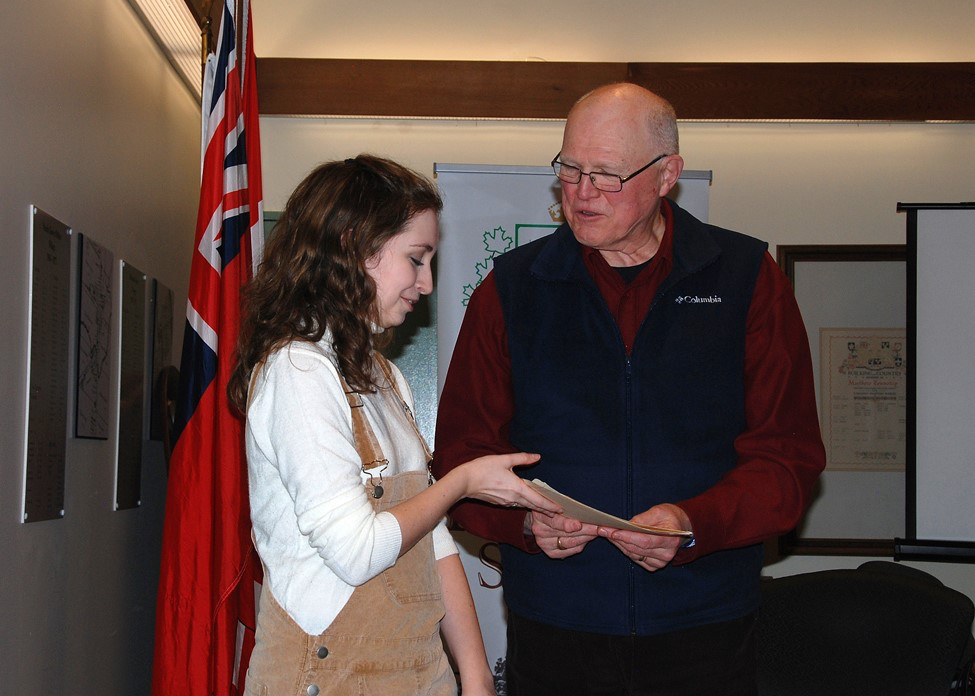Joseph Currier
Joseph Currier
Presenter: Hannah Blaine. Article by Owen Cooke, Pictures by Maureen McPhee. March, 2017.
Hannah Blaine, now a fourth year history and political sci-ence student at Queen’s University in Kingston, was the Society’s research student in the summer of 2016. On a snowy Wednesday night in March she told a hardy group of nineteen members and guests about her project to doc-ument the story of Joseph Merrill Currier.
Currier was born in North Troy, Vermont, in 1820, and attended primary school there. In 1837, at age seven-teen, he came to Canada with the intention of entering the timber trade. He first settled in Buckingham, Quebec, and worked in the Bigelow Mill. While there he met Christina Wilson, whom he married in 1846. They moved to Bytown about 1849. His first son was born about that time. In Bytown, Currier managed the lumber business of McKay and McKinnon Co., with mills at Rideau Falls. While there, he was introduced to Moss Kent Dickinson, who also worked for the firm. In 1853 the business was leased to Currier and David McLaren, and later operated by Currier alone.
Three of four Currier children died of typhoid in 1858, and Christina died of what the Victorians referred to as a “broken heart”. Currier himself was busy in his career. In addition to the mill he was a partner in the Victoria Found-ry. In 1859 he served one term as Alderman on the Council of the new City of Ottawa. Recognizing the value of the sawn lumber trade to the United States and of the site at the control dam in Manotick, he joined Dickinson in building mills there, and bought up lots around the dam in 1858-59. The state of the art turbines for the mill were fashioned at the Victoria Foundry. Currier also built a “cottage” on one of his properties on Mill St.
In January 1861 Currier married again, to Anna Crosby, an American from Lake George, New York, and twenty years his junior. Only two months later she died tragical-ly, her dress caught in the machinery of the grist mill in Manotick. Her husband soon sold his interests in the mills, to concentrate on his businesses in Ottawa.
In 1863 he was elected to the Legislative Assembly of the then Province of Canada (1841-1867), in its last sittings in Quebec City. He was elected as the first Member of Par-liament for Ottawa in the new House of Commons in 1867, and continued to represent the city through to 1882. In politics he was a Liberal-Conservative, but was not really attached to a party. He was always concerned about tariffs, and how they impacted his business.
He married for a third time in 1868, to Hannah Wright. For her he constructed “Gorphwysta”, or “haven of rest”, a mansion at 24 Sussex Drive, designed by his brother and today the official residence of the Prime Ministers. The following year they added a ballroom, where in 1870 they entertained Prince Arthur, later Duke of Connaught and Governor-General of Canada, on his tour of Canada and the United States.
Currier had many other interests in Ottawa. He was the first president of Beechwood Cemetery Co., a director of the Ottawa Agricultural Society, president of the newly-formed Rideau Club, a director of the Ottawa City Pas-senger Railroad Co., president of the Citizen Printing and Publishing Co., a member of the Board of Trade, as well as holding other positions in the community.
However, changes in the tariffs on timber to the United States, and then a fire destroying his mills in Hull, left him bankrupt by the late 1870s. He took on the position of Postmaster of Ottawa. This was a salaried position, whereas being an M.P. was unpaid in those years. He remained Postmaster until his death..
Joseph Currier died in 1884, at a New York inn, returning from a voyage undertaken to Bermuda for his health. He is buried in Beechwood Cemetery, along with his first two wives and the three children who pre-deceased him, and whose bodies he had moved to the new cemetery. Han-nah concluded that Joseph Merrill Currier was an im-portant contributor to public and business life in Ottawa through the latter part of the nineteenth century.
A lively question and answer session on various aspects of his life and influence followed, and a descendent of Currier offered interesting insights on his private life. Re-freshments and conversation concluded the evening.




